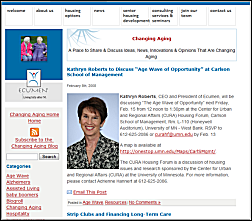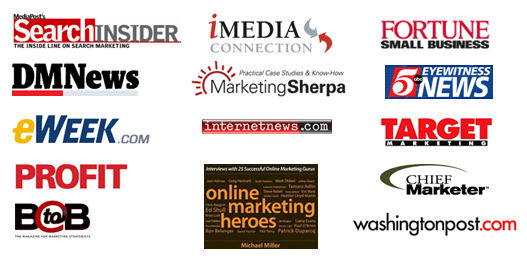Blog from the web:
http://www.toprankblog.com/2008/08/blog-seo-tips-from-ses-san-jose/
Blogs have been abuzz for at least 4 years in the tech space and in the past 2-3 years in the business marketing world. Like many new marketing/communication channels, there continues to be a need to demystify shiny new objects and what they mean for businesses. Blogs and search engine optimization are no different.
One point I would make is that companies are wasting their long term time when setting up blogs purely for SEO purposes. It’s short term thinking and over time, results in difficulties with keeping momentum, new ideas and content. How do I know? Been there and done that, many times.
It’s far more realistic to implement blogs for specific purposes such as product communications, online newsroom, thought leader/strategy, customer support/communications, news, branding, advice/tips, aggregation of content in specific topics and many more. Regardless of the purpose, each blog implementation and ongoing management should have an intentional SEO effort.
Our session at SES San Jose on Blogs and Feeds included Amanda Watlington who gave a litany of advice and insights on strategic considerations for blogging ranging from goals to content sourcing to URL. She also offered an impressive list of specific tactics for optimizing both blogs and feeds. Amanda has been presenting on this topic at SES since the session was first implemented 3-4 years ago.
Chris Boggs gave advice on linking from blogs with examples of why not to link to press releases since they can get removed and not linking to other types of content because of archiving and lack of proper redirection.
Daron Babin made an argument based on his personal experience with the new WebmasterRadio.FM site on why it might be better in some cases not to use a blog platform, but to use a custom CMS (content management system) that publishes feeds. He offered numerous ranking examples and technical details of how the publishing platform automates many SEO friendly features of the web site.
My presentation on blog SEO focused on the value and opportunity with links specific to blogs and also offered 3 case studies.
In 2007 there were approximately 70 million blogs tracked by Technorati and this year they post 112 million, although there are likely far more than that. Out of all those blogs, 100 million have less than 20 inbound links. 400,000 blogs have more than 20 links and the top 2,600 blogs have over 1,000 inbound links.
Think about that. To be one of the top 1% of all blogs according to Technorati, it takes (among other things) 1,000 inbound links. That’s a number any competent search marketer could achieve in a reasonable amount of time provided there’s good content to work with. It represents a good illustration of the opportunity for SEOs to leverage blogs as a compliment to search engine optimization programs.

The first case study I presented concerned a Senior Housing Development Company, that wanted to provide an informal communications channel to address topics of interest to their target market and also to motivate a shift in thinking of their industry from “old folks homes” to “senior communities, senior living”.
Tactics included updating their blog and optimizing with keywords as well as leveraging categories to offer an online newsroom to archive optimized press releases both chronologically and by keyword-rich category.
Results included the blog becoming a top 5 source of referring traffic to corporate site, a huge increase in keyword rankings and a 500% increase in unique visitors.

The second blog SEO case study involved an online book and games retailer that wanted to tap into the passionate communities of games and puzzle enthusiasts online.
The tactical approach involved creating robust online game content include taking old style carnival games and having them made into Flash games to be played on the blog itself. A presence was created on Facebook as well as social media promotion efforts on StumbleUpon, Digg and bookmarking sites. Also, Twitter data was mined for users talking about games, puzzles, learning etc and followed to create a channel for promoting the latest games posted to the blog.
Results for the online puzzles site included a doubling of unique visitors from organic search, a quintupling of monthly traffic and more than qunitupling of page views to well over 400,000 per month. Now the site not only sells books and games but monetizes content/traffic with contextual advertising.
The third blog SEO case study involved our own blog, Online Marketing Blog. Our strategy was to transition a news blog into a unique content destination that would demonstrate TopRank’s thought leadership on topics ranging from Push and Pull Public Relations to Digital Asset Optimization. Increasing awareness in the search, PR and direct marketing industries as well as with prospective clients were specific, long term objectives.
Tactics for Online Marketing Blog include a regular schedule of unique content: industry and SEM agency insights, interviews, conference coverage, surveys, blog reviews and blog tools, photos & video.
Results include being ranked in the Technorati 100 (#31 favorite out of 100 million + blogs) and in top 15 on the AdAge Power150 list of top marketing blogs. However, the more meaningful results according to objectives include media coverage in influential publications:

Additionally, our blog ranks in Google on many, difficult keyword phrases such as “online marketing” #2, over 13,000 RSS subscribers and about 80k monthly web visitors. However, the most meaningful results are that we get daily advertising requests, weekly requests from the media, weekly requests to speak at conferences and daily new business requests.
Blogging alone can be a long term productive marketing channel. Blogging, optimizing and promoting great content delivers a far greater competitive advantage.
-----------------------------------------------------





 Last week I spent some time speaking with
Last week I spent some time speaking with 
 Google first
Google first 


